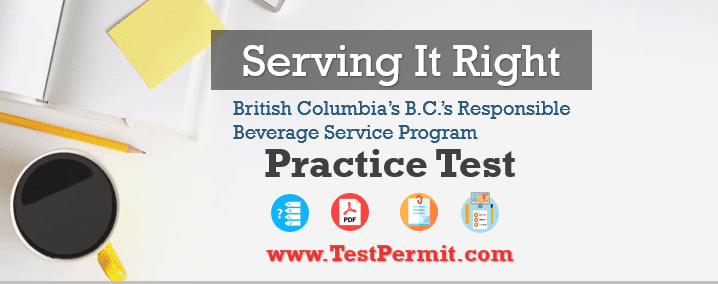Serving It Right Practice Test Module 1: Alcohol and Your Legal Responsibilities- Multiple Choice Questions Answers.
This practice test is designed to give you the knowledge and skills you need to provide responsible beverage service at your establishment. It’s critical that you read and understand all the patterns in this questions answers quiz. To obtain you’re Serving It Right (SIR) certificate, you must score 80% (This means answering 28 (or more) of the 35 questions correctly.)
Answering the questions and completing the activities throughout this test will help you learn and understand the practical application for your work. Responsible beverage service doesn’t end with SIR certification. You’ll continue to develop your skills through practice and work experience—you could even seek out further training. Remember, SIR certification must be renewed every five years.
Serving It Right Practice Test Module 1
| Name of the Test | Serving It Right Exam |
| Test Type | Practice Test |
| Topics Covered | Module 1: Alcohol and Your Legal Responsibilities |
| Total questions | 30 |
| Passing marks | 80% |
| Time Limit | N/A |
